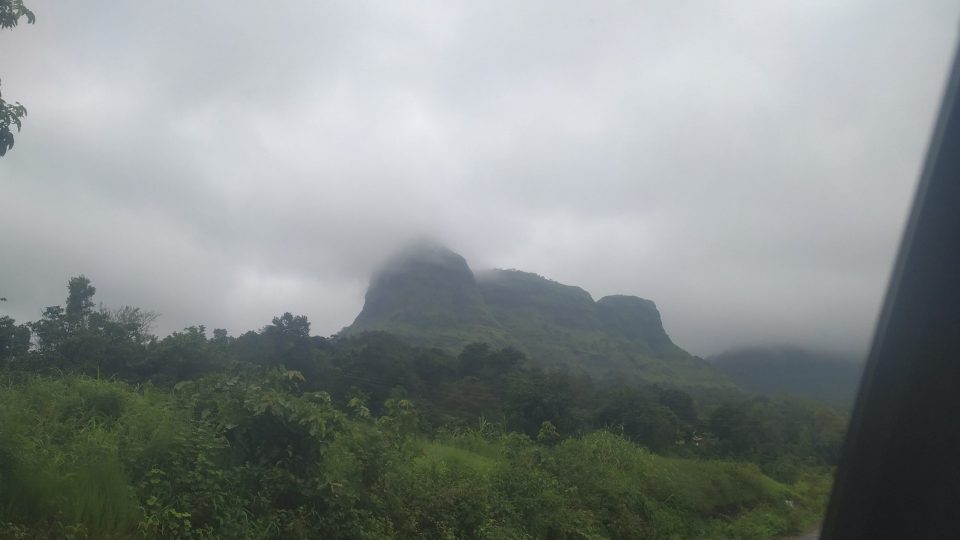
Tribals from Malshej in Maharashtra lost tourists to COVID outbreak

About a hundred kilometre drive from Pune city to the north takes you to Junnar — the birthplace of Maratha King Chhatrapati Shivaji Maharaj. Beyond the small town of Junnar, lies the lush green hilly terrain of Western Ghats that welcomes you to nature’s bounty. After a point, you lose connect with the world with no mobile network, which signals the entry of highly popular tourist destination – the Malshej Ghat.
Travelling deep into the dense jungle makes one realize disconnect this area has from the urban blitzkrieg of technology and resources. However, this very seclusion attracts a lot of tourists, especially trekkers, to Malshej Ghat. The enormous mountain ranges of the Sahyadri, coupled with stories of brave Maratha warriors are no less than a fancy fiction for history lovers. Therefore, a lot of tourists visit forts of Shivaji Maharaj in the region. Besides Shivneri, the birth place of Shivaji, forts such as Chavand, Hadsar and Nimgiri in and around Malshej that draw people.
Tourists who throng the region need food and stay, which are provided by the tribal population living in the region. In fact, a heavy flow of visitors has augured well for the locals who look at it as a steady source of income. They take orders for food (breakfast, lunch and dinner) for the group of trekkers. Some also ask for homestays for a night or more, which give them an additional source of income.
The flow of tourists has increased gradually over the last 10 years. A few youngsters then acquired skills related to automobile repairing and puncture services. All these activities together helped the tribal population of the region earn decent source of income, beyond subsistence agriculture.
While the tourism industry was thriving in Malshej, COVID happened. “Everything was going good until two years ago. But nobody comes here these days,” exclaimed Ramchandra Ware, one of the tribal residents of the region. Ware, who works as a peon in a nearby school, used to operate a puncture shop nearby. While explaining the gravity of the COVID effect, Ware said, “I used to get at least 2-3 bikes (for repairs) a day before the pandemic. Now, I hardly get one bike once a week.” Schools are closed for the last two years, which has shut all sources of income for Ware and many others like him.
Ware’s wife also had a small food business which mainly catered to tourists. “With the help of kids, she used to run the cooking business. Weekends would be full of work for us. But now there is hardly any work and we are left with no money at all. All sources of additional income have exhausted completely,” exclaims Ware.
Another resident, Shankar, said his place would be alive with tourists all the time. “They would park their bikes outside my house and go for an overnight trek. Once they returned in the morning we would serve them breakfast and sometimes even lunch,” Shankar said, adding, “we never really asked for money but they themselves would happily pay good money for our service.”
There are many such families in the region that used to get a handsome income out of this seasonal business, which would last for months even after monsoon. But since the pandemic hit, all of it has come to an abrupt end.
Also read: Now, misbehaviour with tourists a cognisable offence in Rajasthan
Vasantrao Lande, sarpanch of Anjanwale, a village located in the hills of Malshej, had a lot of such stories to tell. He said, “The only source of stable income here is farming, that too for one season i.e. monsoon. We sow rice here, but once the rains are gone, we are left with no work and no cropping opportunities. Hence, people try to find other sources of income. If they do not find any, they migrate to nearby villages/taluka for employment.”
Lande said it is a good thing that the state government has declared Junnar taluka a tourist destination. Tourism is good for the region, he says. “A lot of people used to come here for trekking, which gave our villagers employment. People would come asking for tea, breakfast or meals and our villagers would happily serve them with the tastiest food.”
“They (tourists) would get the hospitality services at the lowest cost and villagers would get some extra cash. So it was a win-win for all,” Lande summed it up.
The sarpanch believes that the kind of thought sharing and interactions that happen through tourism help solve many issues in remote villages.


